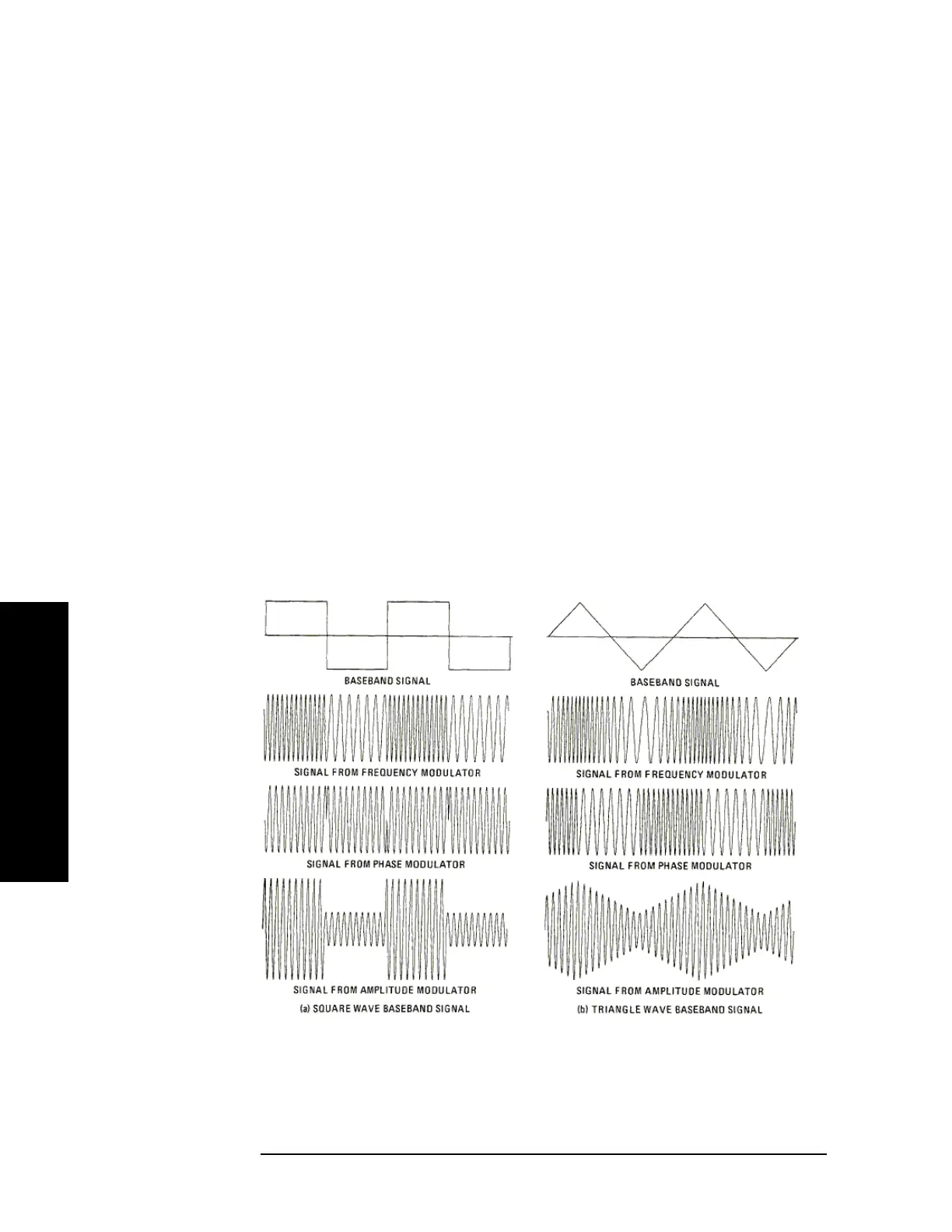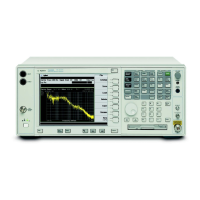294 Chapter 5
Concepts
Analog Modulation Concepts
assumed that the phase modulator doesn’t produce AM - only ΦM. The FM
waveform is as expected. The frequency goes up on the positive peak of the
baseband signal and down on the negative peak. The phase modulated signal,
however, is peculiar. The frequency is generally constant throughout except for a
discontinuity where the baseband signal switches amplitude. The waveform of the
figure was contrived so that a 180
o
phase shift occurred exactly at a zero crossing
of the carrier. Mathematically, the derivative of a square wave is the constant zero,
except for a positive spike (impulse) where the baseband signal switches positive
and a negative spike where the square wave switches negative.
Now look at the triangle wave Figure 5-8 on page 294. The frequency modulator
produces a continually increasing frequency as the baseband signal slopes upward
and a continually decreasing frequency as the signal slopes downward. The phase
modulator produces a signal that resembles the signal from the frequency
modulator for the square wave baseband signal. This is because the derivative of a
constant slope is a constant. When the slope is positive, the phase shift is
continually increasing, thus producing a uniform frequency shift upward. When
the slope is negative, the phase shift is continually decreasing and produces a
downward frequency shift. For the triangle wave baseband signal, the shift in
frequency when the slope changes is proportional to the change in slope.
Figure 5-8 Signals from Frequency, Phase and Amplitude Modulators for Various
Baseband Signals (Square and Triangle Waves)
Now note the sine wave of Figure 5-9 on page 295. The signals from the
frequency and phase modulators look the same except for the 90 phase shift
